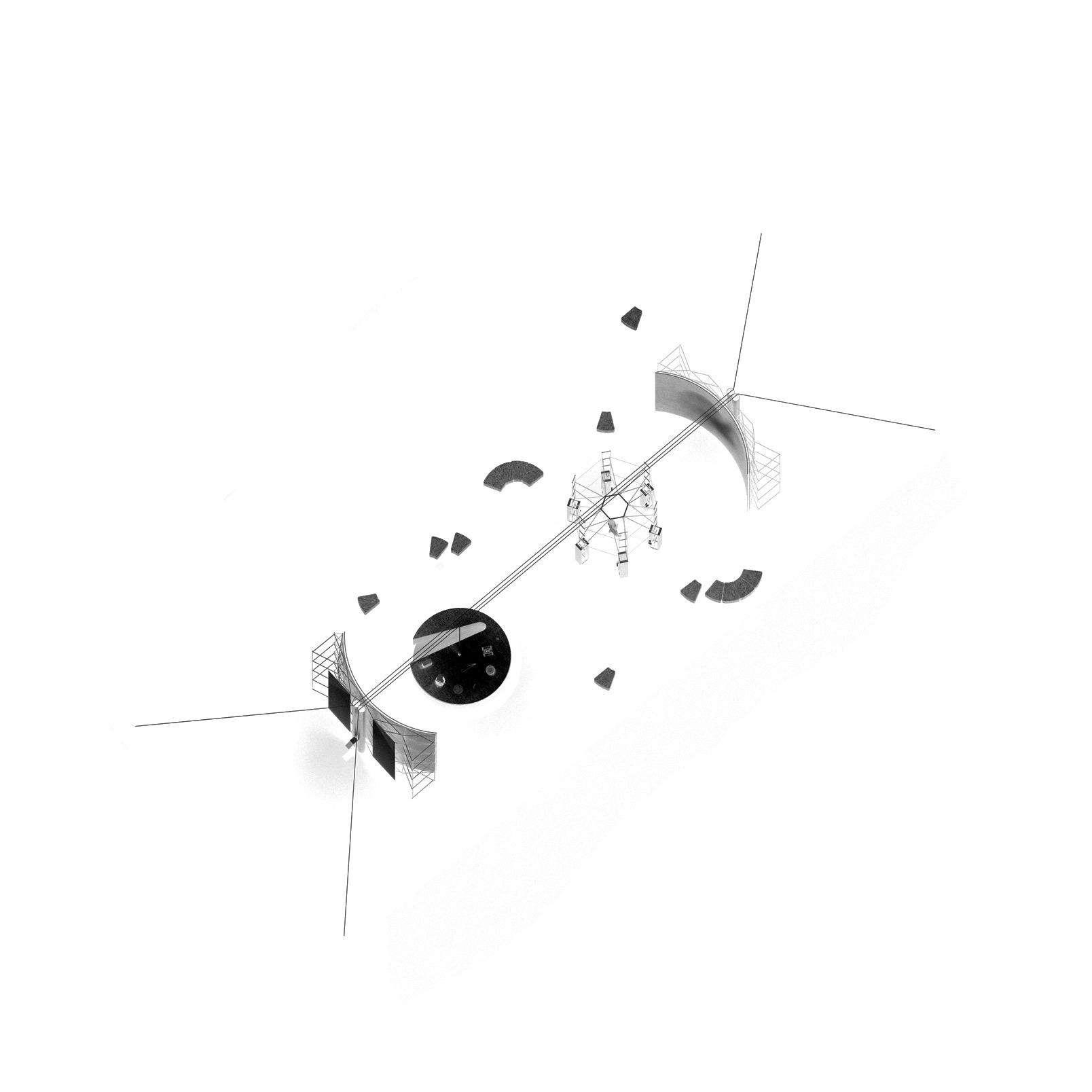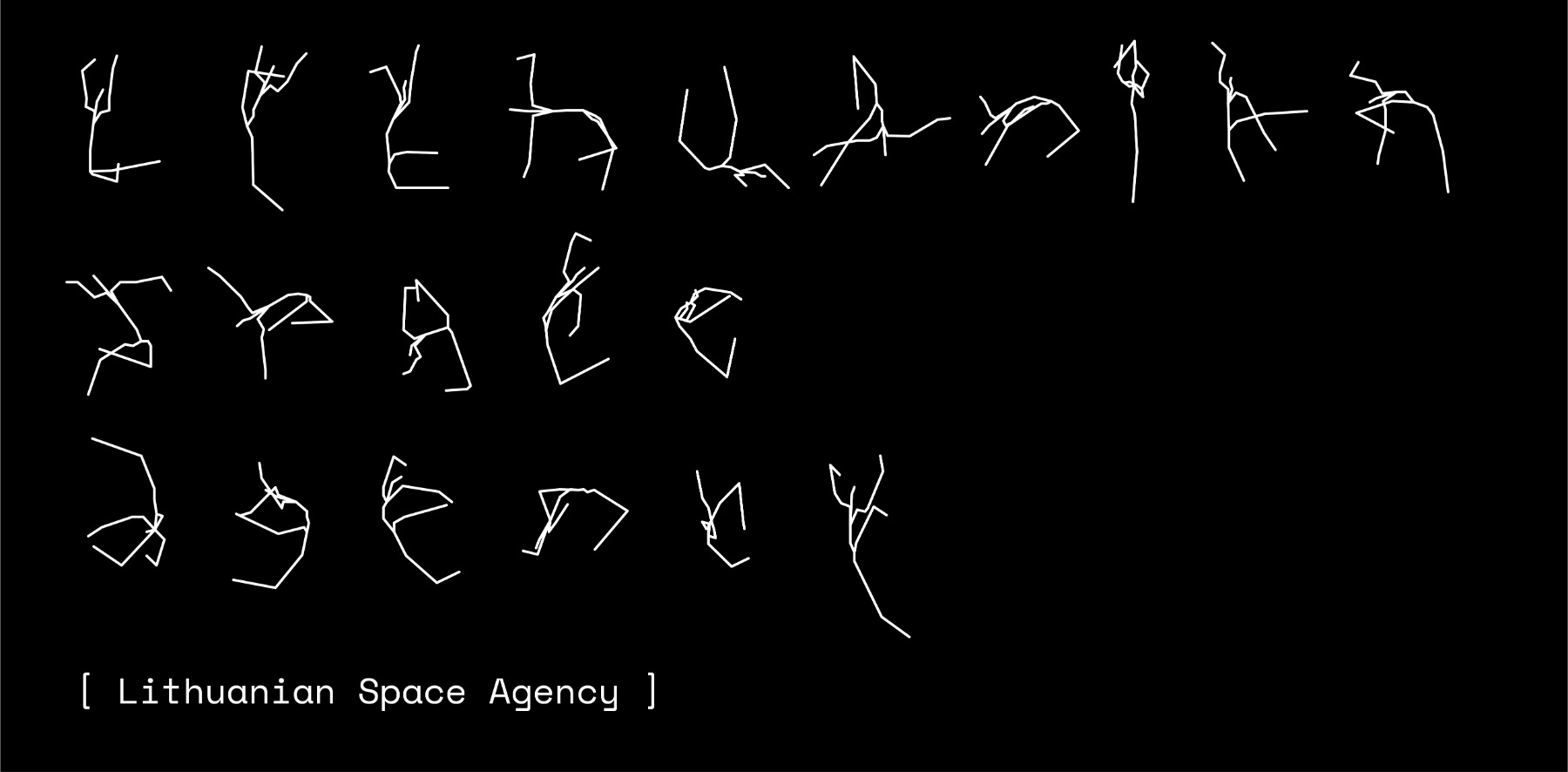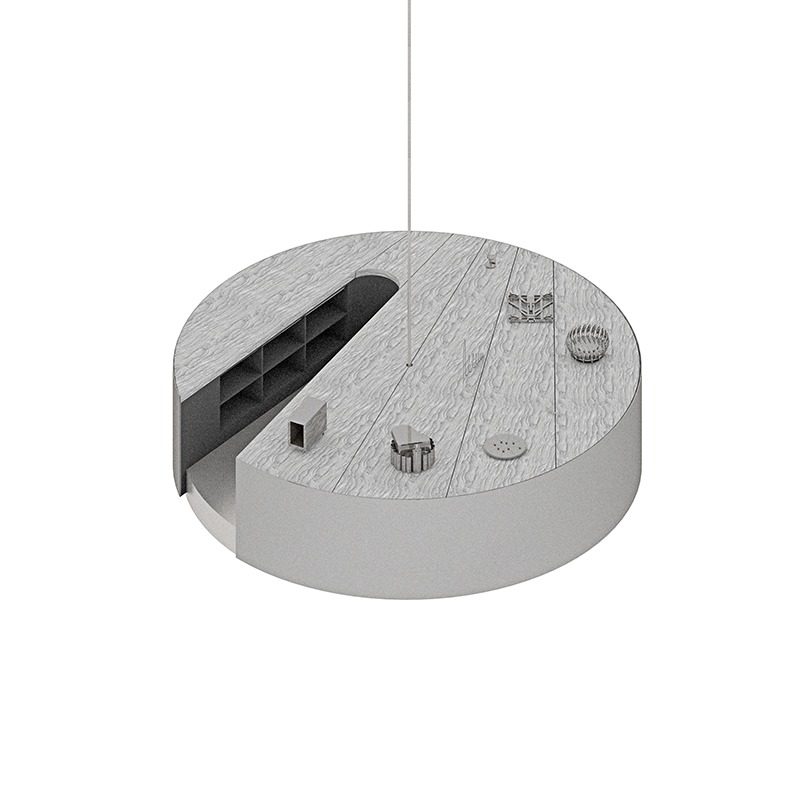
Planet of People
The Lithuanian Space Agency, established by Julijonas Urbonas, seeks to expand space culture
Jogintė Bučinskaitė
‘We are too down to earth to delve into space’ says Julijonas Urbonas, an artist, designer, engineer and researcher, ‘but we could try and imagine what would happen if various disciplines would have to be transferred into space — arts, culture, architecture among others.’ The Lithuanian Space Agency (LSA), established by Julijonas Urbonas, represents Lithuania at the 17th International Architecture Exhibition of the Venice Biennale. In the unique setting of the Renaissance church Santa Maria dei Derelitti, the LSA proposes to consider a fictional outer-space world that brings together gravitational aesthetics and cosmic imagination.
Arterritory presents the following short conversation with Julijonas Urbonas.
What was the motivation behind establishing such an organisation and what are its aims?
The Lithuanian Space Agency was established in 2019, in reaction to an apparent lack of space culture in the country. I’ve been researching gravitational aesthetics for more than a decade now in collaboration with hard science experts. As it turns out, Lithuanian space culture has not been explored before, almost as if it was losing its gravity at the Kármán line where the Earth’s atmosphere ends. It is rather unfortunate because Lithuania has a unique history of space research.
Successful institutions that are currently operating, such as the Lithuanian Aerospace Association Lithuanian Space Association or the Lithuanian Space Office, focus more on expanding science and business sectors. Due to this, space is perceived as a new economic field. It is not in their interest to discuss culture and arts in space. Having evaluated these circumstances, I felt there was a need to fill this niche and initiate a public discussion.
The LSA identity design: typeface based on human skeleton, 2021 © Julijonas Urbonas and Studio Pointer*. Courtesy Lithuanian Space Agency
What is the connotation of ‘space’ in the organisation’s name?
In English, the word space designates both the spatial dimension and outer space but in Lithuanian, cosmos is not only above our heads but also inside of them. In naming the organisation the Lithuanian Space Agency, I consciously avoided the term cosmos because this way certain restrictions are lifted, allowing one to talk about space as a dimension that can be perceived as cosmos, architecture, territory, etc. In a sense, the agency is free from the cosmic context as well because I believe that in the future, there won’t be any distinctions between Earth phenomena and space phenomena — Earth is part of the cosmos. This active distinction may be contributing to a crisis of imagination.
The LSA’s laboratory axonometry, 2021. © Julijonas Urbonas and Isora x Lozuraityte Studio. Courtesy Lithuanian Space Agency
How important is the national aspect in terms of the agency’s activities?
When we think about specific aspects of culture such as cosmic identity, we often restrict ourselves to economic and technological terminology. Even more often, we copy countries like the USA or Russia; we look up to their programmes and achievements as if we don’t have our own unique and independent imagination. Generally speaking, the dominant cosmic imagination is rather limited, having been formed in the first Space Age during the Cold War. The two superpowers were competing with each other: who will touch the cosmic body first, who will fly the farthest, etc. However, in the last decade, we saw the emergence of new national space programs and discussions around space economics — all these processes contribute to the manifestation of the New Space Age. An increasing number of disciplines make use of the astro- prefix and rethink their theoretical framework through the perspective of space.
The Lithuanian Space Agency’s work isn’t focused on the visibility of a particular country in space but rather on spreading the idea about the openness of space to various people, experts and disciplines. On the other hand, any activity in space automatically becomes part of international space culture. Cultural, social or biological attributes such as nationality, race, sex, sexual orientation, age, social status or political views dissolve whilst suspended in space, detached from systems of judgement and classification prevailing on Earth.
The LSA identity design: typeface based on human skeleton, 2021 © Julijonas Urbonas and Studio Pointer*. Courtesy Lithuanian Space Agency
How would you describe the Lithuanian Space Agency’s practices and what can be expected in the future?
The agency is like a bureaucratic stage set that helps make my ideas about space more believable. When ideas are institutionalised, their effectiveness and persuasion increase in the very same way that the use of metaphor in literature (or fiction) enables the imagination. You could say that the founding of this organisation is an exercise for imagination that takes into consideration the realistic possibilities and influences of such an agency.
It is possible to see it as a cosmic logistics company operating an imaginary means of transport — poetic rockets that can shift one into both physical and fictional space. This could be considered one of the intended results, although the agency does not aim to create physically tangible objects. The agency’s work is oriented towards exercising the cosmic imagination and curating poetic and critical projects about the extraterrestrial culture. It is like an ideas lab, which aims to involve the knowledge and imagination of as many representatives from different astro-disciplines as possible.
The outcome of the Lithuanian Space Agency’s project will be shown at the 17th International Architecture Exhibition of La Biennale di Venezia. We’re working together with an international team on a programme called Planet of People.
Lithuanian Space Agency team. Photo: Emilija Filipenkovaitė
Could you tell more about the Planet of People programme? What is it about and what issues does it address?
It is the first time that with this programme I have moved away from it being only a personal but an institutional affair. The project revolves around the idea of sending humans to L2, one of the Lagrangian points in space where gravity is absent, and allows the frozen bodies float freely until their weak gravities make them assemble into a blob. Within a certain period of time, these floating bodies clump together and start shaping a planet due to this biomass's cumulative gravity.
At present, we examine the possible consequences of such a project and the resources, knowledge and competence needed to realise it. Three aspects come into play so far: aesthetic, ethical and political. On an aesthetic level, the questions of cosmic culture and imagination are being raised. Meanwhile, on the ethical level, we are preoccupied with space colonialism and astrobiology, as well as discussing space pollution. In terms of politics, questions are being raised about already existing space programs, the policies governing the activities of the exploration and use of outer space
At the same time, this program (as well as the agency’s future work) is related to exploring new forms of science fiction. I am interested in liberating science fiction from conventional means of expression — literature, films or video games — and (in)fusing it into other fields such as dance, sociology, engineering, culinary, medicine, etc. I wonder how astrophysical fiction, dance fiction or medicinal fiction would look like.
The LSA’s laboratory section, 2021. © Julijonas Urbonas and Isora x Lozuraityte Studio. Courtesy Lithuanian Space Agency
While investigating if the idea of a planet made of people could be implemented, you were collaborating with scientists and thinkers from many different fields and countries. What did you manage to find out and what were their arguments for and against this project?
There were two contrasting views. Some claim that it is practically impossible to achieve because it requires immense precision regarding timing, placement of the bodies and other circumstances. Others state that even before a catapulted human being would reach any of the Lagrange points, they would turn into cosmic dust. They also emphasis the logistic challenges: for a planet of people to form, not only a trillion years must pass but also a vast amount of fuel is required to launch this many people into space. This would have irreversible consequences for Earth’s resources and economy.
However, a group of human scientists think that the project can trigger a discussion about alternative survival models and space colonisation problems. Others are concerned about the dangerous eschatological side of the project that would contribute to rehearsing future scenarios without an implied end of all, proposing the possibility of a totally different human existence instead. Finally, several interesting phenomena come into view such as cosmic pessimism, which emphasises the general indifference of space towards us and the insignificance of human life on the universal scale.
Reception of the LSA’s laboratory, 2021. © Julijonas Urbonas and Isora x Lozuraityte Studio. Courtesy Lithuanian Space Agency
The Lithuanian Space Agency is representing Lithuania at the 17th International Architecture Exhibition in Venice. How is this project related to architecture?
This project is a crossover between speculative design and architecture. Here, architecture is not physically tangible but imagined instead. By considering architecture on a planetary scale, for instance, terraforming, we’re able to view earthly architecture differently.
This unique critical perspective defines architecture as a very earthbound discipline, with gravity as its main problem. That is why when somebody imagines suspended foundations and levitating buildings, very often the rest of the constructs stay earthbound or stuck to Earth.
This is why it is important to push architecture into more radical circumstances and consider the inversion of Vitruvius’ conceptual architecture. In other words: what would happen if architecturally humans gave up their long-held central position in favour of becoming a raw material? To become a building block for a new planet would allow us to not only talk about a particular formation of cosmic architecture but also about a specific monument to the human species. What if this reflects the human desire to put themselves into a central spot?
Does it mean that this project is focused on humanity rather than space?
It is about space being within us and not out there.
Deployable structures of the LSA’s laboratory, 2021. © Julijonas Urbonas and Vladas Suncovas. Courtesy Lithuanian Space Agency
What question does the LSA raise in response to the question of how can we live together?
The main topic of the 17th International Architecture Exhibition of La Biennale di Venezia How Will We Live Together? reflects in the project Planet of People in a variety of ways. Firstly, with Planet of People, the agency pushes the architectural imagination to its extremes and explores what it would actually take to realise this hypothetical artificial planet made up of human bodies. How many people do we need to form a sustainable architectural unit that we have never built before? How does that correspond to the notion of colonisation of other planets that already exist? Would this planet be considered as a space debris?
The project also raises questions about its potential sociopolitical implications. When humans are liberated from the constraints of Earth and simply become the building blocks of this new extra-terrestrial structure, what is the role of our earthly cultural and ethical notions? I would like to invite you to imagine and consider what would happen if we moved a huge number of people to radically different circumstances; if we strip them of all social, racial, cultural, sexual, political and economic constructs, and bring them together so that they stay in close proximity for a substantial amount of time. That would be the ultimate revision of human architecture. Planet of People is a kind of platform for the extraterrestrial imagination that allows to look at oneself from an alien perspective. Perhaps this angle could empower citizens to live and work together, regardless of any sociopolitical differences.

The LSA’s exhibition in Venice is curated by Jan Boelen, commissioned by Julija Reklaitė and organised by Rupert, Centre for Art and Education, and presented by the Lithuanian Council for Culture.
Title image: Julijonas Urbonas. Photo: Emilija Filipenkovaitė